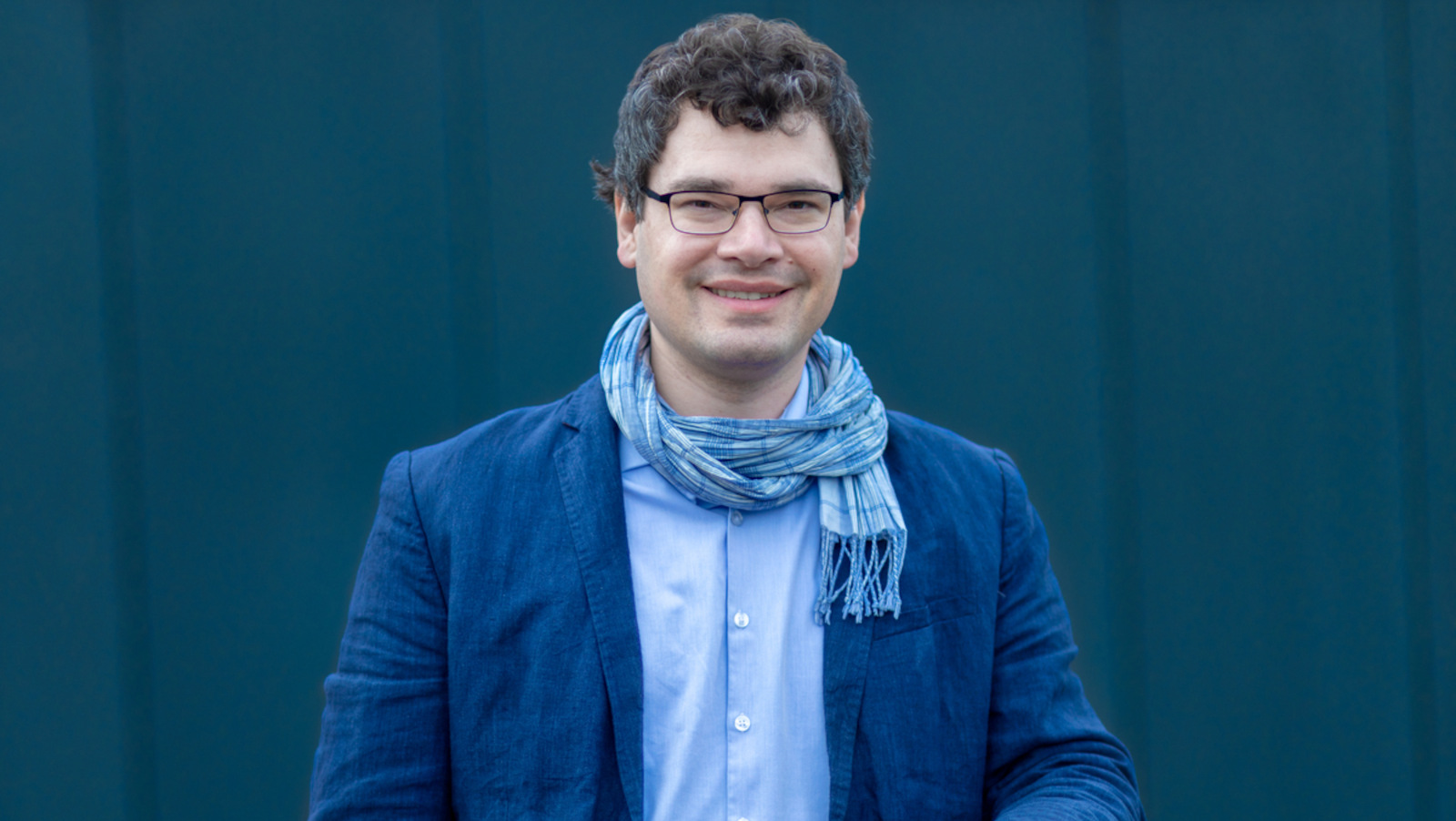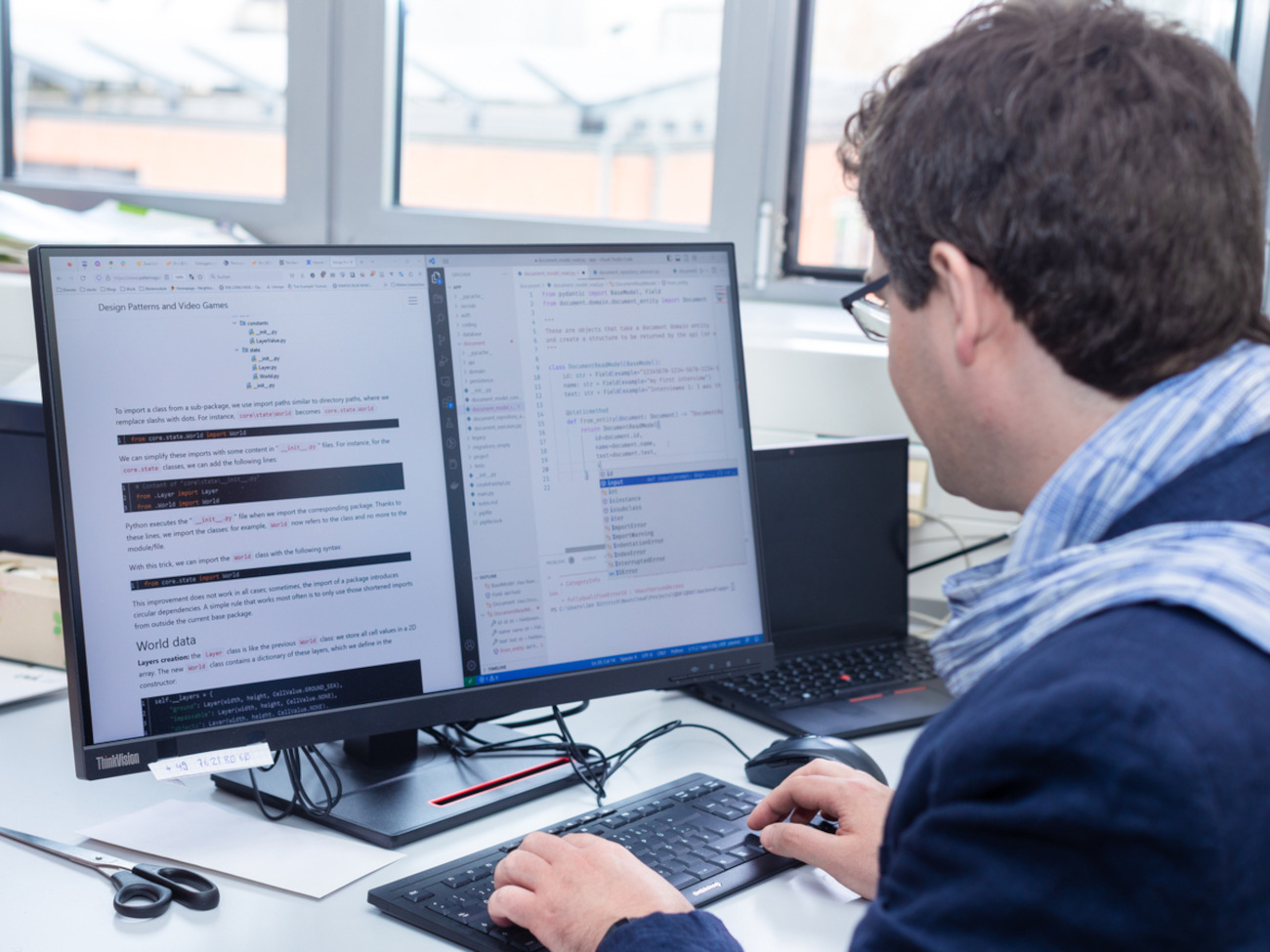
© Matej Meza / Universität Bremen
Research between the Kitchen and the Computer
Jan Dittrich Looks at How We Learn Using Instructions
Baking and programming have more in common than you might think, says Jan Dittrich, PhD student at the Department of Anthropology and Cultural Research. In both areas, many people learn by teaching themselves with the help of instructions. In his research, he investigates how they do this.
Baking a delicious loaf of bread or cooking a spicy curry – Jan Dittrich often calls what others do after work working time. While he is active in the kitchen, he takes text and audio notes or records video. He is constantly comparing: What does it say in the recipe, what can he put into practice? Are there any differences – and if so, why? How much does he depend on the recipe? He asks himself similar questions in front of the computer on different days. Then, for example, he follows instructions on how to build a simple game using the Python programming language.
The results of his self-observations will feed into his doctorate, on which he has been working at the University of Bremen since September 2022. How people learn new skills with instructions is the main question he wants to answer for both baking and cooking as well as for programming. The similarities are not exactly obvious, but are therefore consistent from Jan Dittrich’s point of view. “It’s because the areas are so different in many ways that the focus is on the instructions as a connecting element,” he says. There are also many people in both areas who are self-taught. Correspondingly, a large number of instructions can be found in blogs and internet forums as well as in books.
Instructions – a Matter of Interpretation
Central to Jan Dittrich’s research is the concept of “immutable mobiles”. This term from technical and science research describes things such as maps, diagrams, and scientific publications that are meant to make knowledge that has been created in one place available in another. But how successful can this knowledge transfer be? This is what the doctoral student is looking into based on instructions, which he also considers to be “immutable mobiles”. “Not least through images, for example of finished dishes or computer games, the instructions suggest that the same result can be achieved in different environments,” he explains. In practice, however, there are great differences in how people interpret instructions.
In his research, Jan Dittrich essentially refers to the British anthropologist Lucy Suchman, who researched how humans operated what was then a new photocopier using an assistance system in the 1980s. In doing so, she examined the interactions between the photocopier, the instructions of the assistance system, and the situation in which people used it. She found that use of the system was not intuitive, but rather required a lot of interpretation by the users. It didn’t always work as planned by the designers.
Focus on Autoethnographic Research
Jan Dittrich encountered similar problems when, after studying media art and design, he worked for several years as a designer and UX (user experience) researcher at Wikimedia Deutschland. There he designed web environments to make reading and writing Wikipedia articles as user-friendly as possible. “This work is described in textbooks and by the designers themselves as a clear sequence of steps that follow one another,” he explains. In practice, however, he experienced that his work deviated significantly from these descriptions and was often only roughly based on them. This contradiction between the idealized process and practice amazed him time and again – and was the impetus for him to look at the topic scientifically. Jan Dittrich also expanded his programming skills while working at Wikimedia. Therefore, it made sense for him to study programming instructions in his doctorate.

© Matej Meza / Universität Bremen
A large part of the data he collected comprises what is known as autoethnography, where Jan Dittrich watches himself cooking, baking and programming. He also spends time analyzing instructions, watching others work with them and interviewing them.
“The Result Is Often Not Decisive When Programming”
One of his research questions: What are the instructions used for? While cooking and baking usually focus on the result – the finished meal – this is not necessarily the case for programming. According to Jan Dittrich, such instructions are often used to learn a programming language better on the basis of a specific example. They are used by people who learn programming in their free time as well as by professionals who want to keep their knowledge up-to-date or expand it.
What both cooking and programming have in common is that instructions are rarely followed exactly. “Many of those who program professionally just skim over them and look at the underlying code,” says the PhD student. An observation he made in a similar way about cooking and baking. One time, when he was filming himself cooking, he realized he only looked at the recipe for about a minute and a half in the space of an hour. When he had to devote a lot of time to instructions, they were often demanding and sometimes overwhelmed him.
The Space Between Science and Practice
Jan Dittrich is also interested in the cases in which instructions are deliberately changed. Here, he observes an astonishing mix of rigid adherence to the familiar and creative flexibility, which he wants to get to the bottom of scientifically. Jan Dittrich is expected to work on his doctorate until 2025. Practical relevance is important to him in his scientific work – conversely, during his work as a UX researcher, he was often interested in the scientific background of his work. “I’m particularly fascinated by the space between science and practice,” he says.